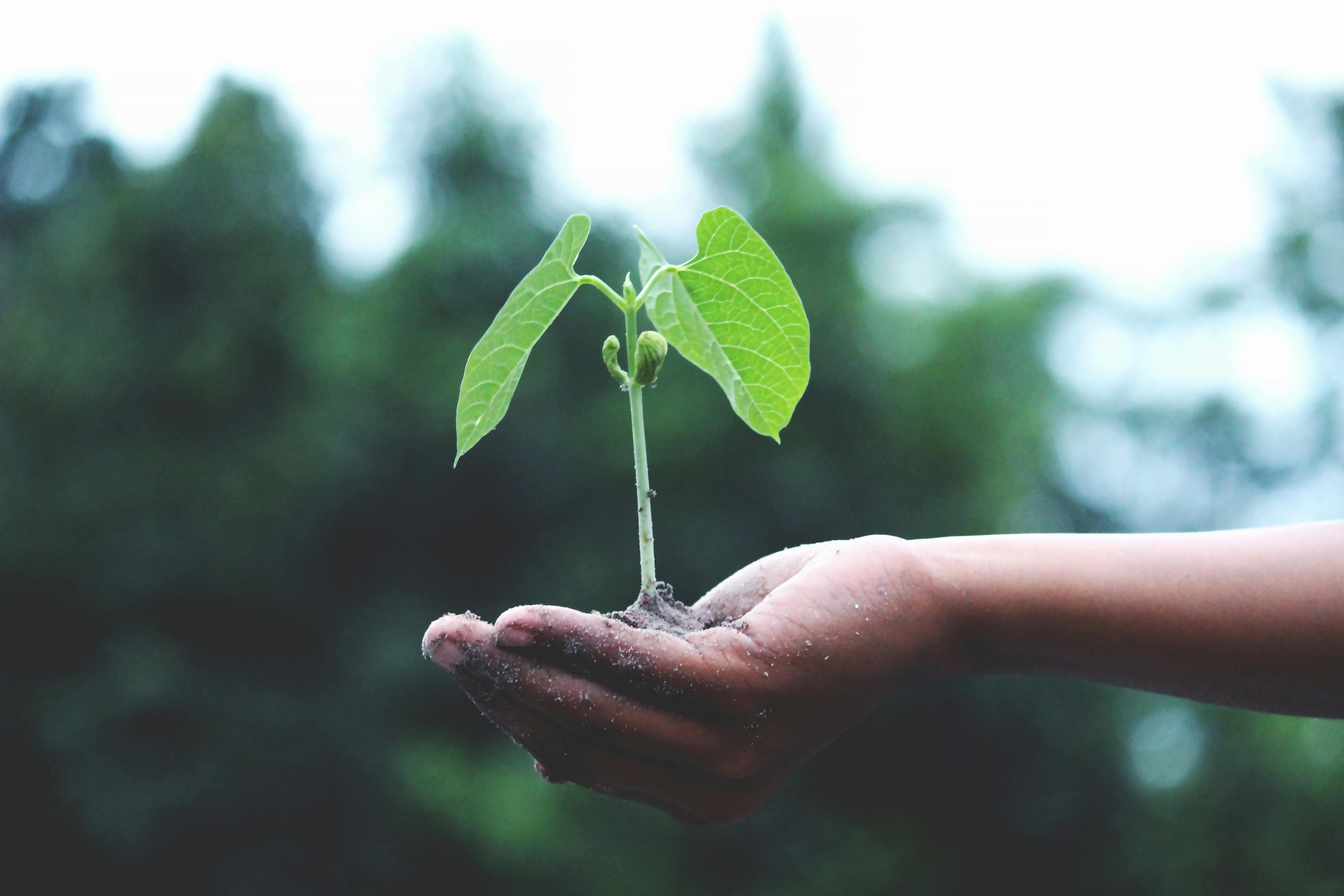Planting an avocado seed is a fun and easy way to grow your own avocado tree. All you need is a few simple supplies and some patience to watch your avocado seedling grow. Whether you’re planting your seed indoors or outdoors, there are just a few steps to follow in order to ensure that your avocado tree will thrive. With the right care, your avocado tree can produce delicious avocados for years to come.1. Start by washing the avocado seed to remove any residue.
2. Use three toothpicks to suspend the seed over a glass of water with the pointed end of the seed facing downwards.
3. Make sure that about an inch of the seed is submerged in water.
4. Place the glass in a warm location but not in direct sunlight and top up with water as needed so that the bottom of the seed remains submerged.
5. After 2-6 weeks, roots will start to grow from the bottom of the seed and a stem will begin to sprout from the top.
6. When this happens, fill a pot with potting soil and make a hole in it, deep enough for half of your avocado seed to be covered when placed inside it.
7. Place your avocado seed in your pot and fill in around it with more soil, pressing down lightly so that it is secure.
8. Water your avocado plant until lightly moistened but not soggy, and place somewhere warm and sunny but away from direct sunlight or heat sources like radiators or air conditioners if possible.
9. Continue to water your plant regularly when necessary so that it remains moist but not soggy, and enjoy watching your avocado plant grow!
Gather The Necessary Materials
Before you begin any project, it is important to ensure that you have all of the necessary materials and tools needed to complete it. This will help ensure that your project is successful, and that you do not waste time having to search for the supplies needed. Depending on the project, these supplies can range from simple craft materials such as glue and paint, to more complex items like power tools and woodworking equipment. Make sure to plan ahead and purchase everything you need before starting your project.
When gathering materials for a project, it can be helpful to have a list of what you need before heading out to the store. You can consult a book or online instructions for details about the specific items required. This will help reduce unnecessary purchases and save money in the long run. Additionally, if you are working with larger materials like wood or metal, make sure that they are cut into the correct size before beginning your project. This will save time in the long run by eliminating the need for multiple trips back and forth from the store.
Finally, remember that safety should always come first when working on any project. Make sure that all of your tools are appropriately stored away when not in use, and wear protective gear such as gloves or safety glasses while working with sharp objects or power tools. Following these guidelines will help ensure a successful outcome for any project you choose to undertake!
Clean The Avocado Pit
Cleaning the avocado pit is an important step in making sure your avocado remains fresh and lasts longer. To clean an avocado pit, you’ll need a clean, sharp knife and a paper towel. Start by cutting the avocado in half lengthwise and removing the pit. Once you have the pit removed, use your knife to scrape off any remaining fruit from the pit. Then, take your paper towel and wipe off any remaining debris from the pit. Once you have the pit clean, store it in a sealed container in your refrigerator to help it last longer.
It is important to note that while cleaning an avocado pit can help extend its life, it does not guarantee that it will last for a long time. Be sure to check on your avocados regularly and use them up within a few days of purchasing them for optimal freshness.
Soak The Pit In Water For 24 Hours
Soaking the pit in water for 24 hours is a great way to prepare it for planting. This process helps to soften the soil and make it easier to dig a hole for your plant. Soaking the pit also helps to ensure that any weeds, pests, or other potential problems are eliminated before planting. It is important to use clean water when soaking your pit, as any contaminants in the water can be harmful to your plants. After soaking the pit for 24 hours, it is ready to be planted.
When preparing a pit for planting, make sure the area is free of debris and weeds. Clear away any rocks or other materials that may be preventing proper drainage or causing compaction in the soil. If you do not have access to clean water, you can also use compost or manure tea as an alternative. When adding compost or manure tea to the pit, make sure it is mixed thoroughly and evenly spread throughout the soil. Once the soil has been adequately prepared, you can begin planting your desired plants.
Insert Toothpicks Into The Avocado Pit
Avocados are a delicious and healthy addition to any meal. But how do you tell when they’re ripe? Inserting toothpicks into the avocado pit is an easy and effective way to determine ripeness. This method works best for avocados that are still on the tree, but can also be useful for store-bought avocados.
First, look at the color of the avocado skin. If it is dark green or black, it is considered ripe and ready to eat. If it is bright green or yellow, it may not be ready yet. Next, insert a toothpick into the center of the avocado pit. If it goes in easily and comes out cleanly, then the avocado is ripe and ready to eat. However, if it is difficult to insert or comes out with some resistance, then the avocado may not be as ripe as you would like yet.
Once you have determined that your avocado is ripe enough to eat, you can simply remove the pit by twisting it with your hands or using a spoon. Then slice the avocado into thin slices and enjoy!

Balancing The Pit Over A Cup Of Water
Balancing a pit over a cup of water may seem like an impossible task, but it is actually fairly easy to do. By using the principles of physics and a bit of creativity, you can easily balance the pit on the surface of the water. The first step is to make sure that the pit is centered on top of the cup. This will help ensure that the pit doesn’t slip off when you are balancing it. Once it is centered, you will need to fill the cup with water until it reaches just above the rim. This will give you enough buoyancy to balance the pit on top of the cup.
Next, use your finger to slowly press down on one side of the pit until there is an equal amount of pressure being applied to both sides. This should create enough tension between both sides so that they remain balanced in equilibrium. You may need to adjust this pressure several times while balancing until you get it just right. Once you have achieved equilibrium, you can then move your finger away and watch as the pit remains balanced over a cup of water!
To make sure that your balancing act lasts longer, try adding a few drops of oil or wax into the cup before balancing. This will create a barrier between the surface and bottom of the cup and help prevent any sudden movements from disturbing your balanced state. With practice and patience, anyone can learn how to balance a pit over a cup of water!
How To Change The Water Every Two Days
Changing the water in your aquarium every two days is an important part of keeping your aquarium clean and healthy. It is also necessary to ensure that your fish remain healthy and happy. In order to properly change the water, you will need a few supplies and tools. First, you will need a bucket or other container for the old water, as well as a siphon hose or other device for removing it from the aquarium. You will also need a test kit to make sure the new water is properly conditioned before returning it to the tank.
Once you have all of your supplies ready, you can begin the process of changing the water. First, remove about one-third of the old water from the aquarium using the siphon hose. Then, use a fish net to remove any debris or uneaten food from the bottom of the tank. After that, add fresh tap water that has been treated with a dechlorinator and tested with your test kit to make sure it is safe for your fish. Once all of this is done, return the new water to the tank using a bucket or other container and allow it to settle for about 20 minutes before adding any fish back into it.
It is important to remember that this process should be repeated every two days in order to keep your aquarium clean and healthy. Over time, toxins can build up in aquariums if they are not properly maintained, which can lead to illness or even death in your fish. By following these steps each time you change your aquarium’s water, you can rest assured that your fish will remain safe and healthy for many years to come!
Monitor Moisture And Temperature Levels
Keeping an eye on moisture and temperature levels is important for a variety of reasons. In certain areas, moisture levels can be too high or too low, leading to the growth of mold or other damaging organisms. Temperature fluctuations can lead to a host of problems, from pest infestations to spoilage to costly energy losses. Monitoring moisture and temperature levels in any environment is critical for maintaining healthy conditions and avoiding costly repairs or replacements.
The best way to monitor moisture and temperature levels is with a combination of instruments and sensors that can detect changes in the environment. These devices can be installed in various locations throughout the site, allowing for continuous monitoring over time. The data collected by these instruments can then be used to determine if conditions are conducive for growth or if the environment is becoming too dry or too hot. This information can help make informed decisions about how best to maintain healthy conditions in an area.
It’s also important to note that some areas may require special instruments or sensors that are designed specifically for those environments. For example, areas with high humidity may require special humidity monitors that are capable of detecting even small changes in humidity levels. These types of devices are often necessary for certain industries, such as food production, where high levels of moisture can quickly lead to spoilage.
Finally, it’s important to note that monitoring moisture and temperature levels isn’t just about preventing damage – it’s also about comfort. Being able to monitor these levels helps ensure that employees and visitors alike are comfortable while working or spending time in the facility. It also helps minimize energy costs by ensuring that the climate control systems are working effectively and efficiently. With proper monitoring in place, it becomes easy to identify potential issues before they become major problems.
By establishing a regular routine for monitoring moisture and temperature levels throughout an area, organizations can ensure they maintain healthy conditions while avoiding costly repairs or replacements due to environmental fluctuations. With the right combination of instruments and sensors, organizations can gain insight into their environment quickly and easily, allowing them to make informed decisions about how best to keep their facilities comfortable and safe.

Conclusion
Growing an avocado tree from a seed is possible if you have the right conditions and are willing to put in the time and effort. It will take some patience, as it can take up to a year for the seed to germinate and many years for the tree to produce fruit. But with a little know-how, you can have your own avocado tree growing in your home or garden. Planting an avocado seed is simple, all you need is an avocado pit, some potting soil, water, and a container. With time and care, you can grow a healthy tree that will provide you with delicious avocados for years to come.
So now that you know how to plant an avocado seed and what it takes to grow one successfully, why not give it a try? The process of growing an avocado tree is rewarding in itself and of course you’ll get the added pleasure of picking your own avocados when they are ripe. Have fun and enjoy!

